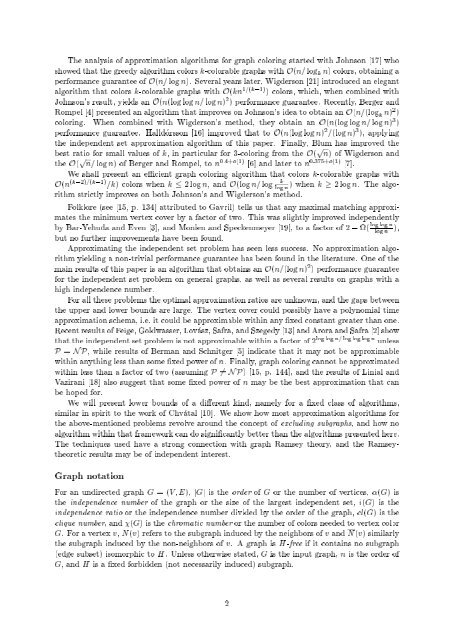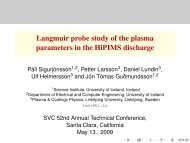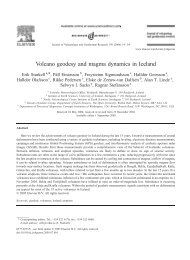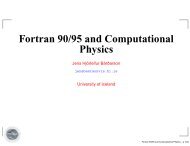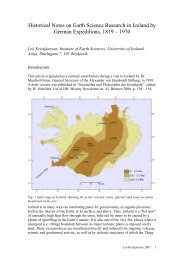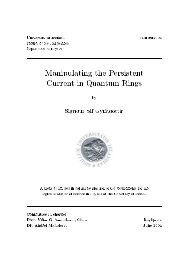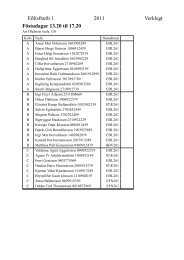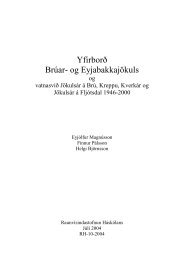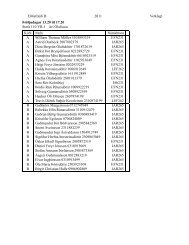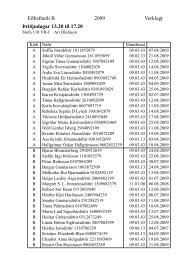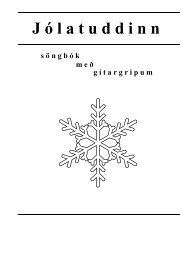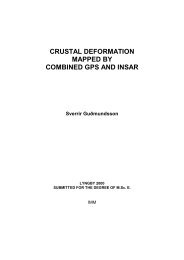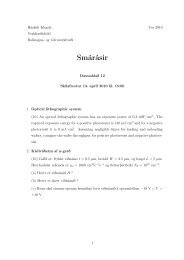Approximating Maximum Independent Sets by Excluding Subgraphs 1
Approximating Maximum Independent Sets by Excluding Subgraphs 1
Approximating Maximum Independent Sets by Excluding Subgraphs 1
You also want an ePaper? Increase the reach of your titles
YUMPU automatically turns print PDFs into web optimized ePapers that Google loves.
The analysis of approximation algorithms for graph coloring started with Johnson [17] whoshowed that the greedy algorithm colors k-colorable graphs with O(n= log k n) colors, obtaining aperformance guarantee of O(n= log n). Several years later, Wigderson [21] introduced an elegantalgorithm that colors k-colorable graphs with O(kn 1=(k01) ) colors, which, when combined withJohnson's result, yields an O(n(log log n= log n) 2 ) performance guarantee. Recently, Berger andRompel [4] presented an algorithm that improves on Johnson's idea to obtain an O(n=(log k n) 2 )coloring. When combined with Wigderson's method, they obtain an O(n(log log n= log n) 3 )performance guarantee. Halldorsson [16] improved that to O(n(log log n) 2 =(log n) 3 ), applyingthe independent set approximation algorithm of this paper. Finally, Blum has improved thebest ratio for small values of k, in particular for 3-coloring from the O( p n) of Wigderson andthe O( p n= log n) of Berger and Rompel, to n 0:4+o(1) [6] and later to n 0:375+o(1) [7].We shall present an ecient graph coloring algorithm that colors k-colorable graphs withO(n (k02)=(k01) =k) colors when k 2 log n, and O(log n= logklog n) when k 2 log n. The algorithmstrictly improves on both Johnson's and Wigderson's method.Folklore (see [15, p. 134] attributed to Gavril) tells us that any maximal matching approximatesthe minimum vertex cover <strong>by</strong> a factor of two. This was slightly improved independentlylog log n<strong>by</strong> Bar-Yehuda and Even [3], and Monien and Speckenmeyer [19], to a factor of 2 0 (log n ),but no further improvements have been found.<strong>Approximating</strong> the independent set problem has seen less success. No approximation algorithmyielding a non-trivial performance guarantee has been found in the literature. One of themain results of this paper is an algorithm that obtains an O(n=(log n) 2 ) performance guaranteefor the independent set problem on general graphs, as well as several results on graphs with ahigh independence number.For all these problems the optimal approximation ratios are unknown, and the gaps betweenthe upper and lower bounds are large. The vertex cover could possibly have a polynomial timeapproximation schema, i.e. it could be approximable within any xed constant greater than one.Recent results of Feige, Goldwasser, Lovasz, Safra, and Szegedy [13] and Arora and Safra [2] showthat the independent set problem is not approximable within a factor of 2 log log n= log log log n unlessP = N P, while results of Berman and Schnitger [5] indicate that it may not be approximablewithin anything less than some xed power of n. Finally, graph coloring cannot be approximatedwithin less than a factor of two (assuming P 6= N P) [15, p. 144], and the results of Linial andVazirani [18] also suggest that some xed power of n may be the best approximation that canbe hoped for.We will present lower bounds of a dierent kind, namely for a xed class of algorithms,similar in spirit to the work of Chvatal [10]. We show how most approximation algorithms forthe above-mentioned problems revolve around the concept of excluding subgraphs, and how noalgorithm within that framework can do signicantly better than the algorithms presented here.The techniques used have a strong connection with graph Ramsey theory, and the Ramseytheoreticresults may be of independent interest.Graph notationFor an undirected graph G = (V; E), jGj is the order of G or the number of vertices, (G) isthe independence number of the graph or the size of the largest independent set, i(G) is theindependence ratio or the independence number divided <strong>by</strong> the order of the graph, cl(G) is theclique number, and (G) is the chromatic number or the number of colors needed to vertex colorG. For a vertex v, N(v) refers to the subgraph induced <strong>by</strong> the neighbors of v and N(v) similarlythe subgraph induced <strong>by</strong> the non-neighbors of v. A graph is H-free if it contains no subgraph(edge subset) isomorphic to H. Unless otherwise stated, G is the input graph, n is the order ofG, and H is a xed forbidden (not necessarily induced) subgraph.2


